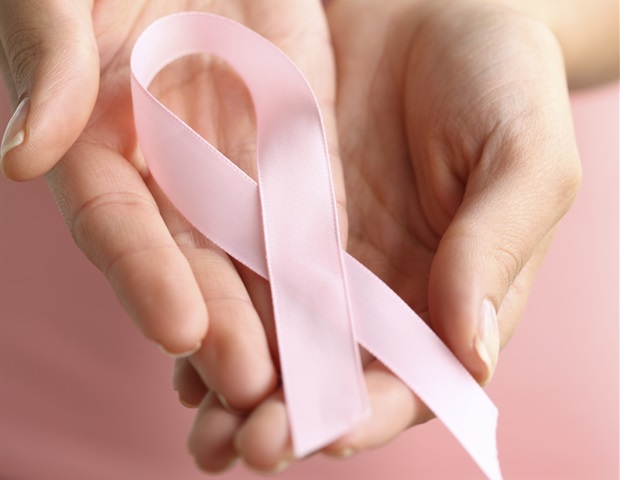The breast tumors of Asian, Black and white women have very different cellular, microbial and genomic features that could potentially be used to personalize care or predict disease progression, according to new research by investigators at the Johns Hopkins Kimmel Cancer Center.
Potential race-specific microbial biomarkers of breast cancer identified by the researchers correlated with genes involved in tumor aggressiveness, blood vessel growth, tumor cell migration and metastasis, and the cancer pathways GLI1 and Notch. A description of the work was published online Jan. 26 in the journal npj Breast Cancer.
The factors governing racial disparities in breast cancer are multifactorial and can include socioeconomic status, access to primary care, timely referrals, and health and nutrition. However, it is important to identify additional modifiers for these differences. Our study demonstrates that the microbiome and immune microenvironments of breast tumors also vary significantly among women of different ethnicities and could potentially be used as biomarkers to predict disease progression or response to treatment."
Dipali Sharma, Ph.D., senior study author, professor of oncology at the Johns Hopkins University School of Medicine and a John Fetting Fund for Breast Cancer Prevention researcher
Sharma and colleagues examined genomic and metagenomic data from The Cancer Genome Atlas cohort, which included 1,018 patients with breast cancer categorized into Asian (65 patients), Black (257 patients) and white (696 patients) groups via self-reporting. They used a web-based tool called xCell to analyze the specific 64-cell signatures of breast tumors among the patients, finding that 11 of the cell types showed very distinct, statistically significant variations among races. Cellular differences were most pronounced between tumors from Black and white women, while the tumors from Asian and Black women showed the least definitive differences compared to each other.
Researchers also observed a higher proportion of smooth muscle cells among tumors from Asian women in comparison to those from Black women. Adipocytes (cells that make up fat tissue) showed the least accumulation in the tumors from Asian women but a significantly higher proportion in tumors from white women. The proportion of hematopoietic stem cells — cells that give rise to all blood and immune cells — was significantly lower in tumors from Asian women compared with those from white women, while MEPs and Th1 cells were significantly higher in tumors from Asian women. Interferon gamma, a substance important for immunity against infections, was higher in tumors from Asian women, while CXCL9, a substance that plays a role in immune activation, was overexpressed in tumors from Black women. Together, the tumor microenvironment-related changes observed in the tumors from Black women may support aggressive tumor progression.
Antibodies eBook

In studies analyzing the bacterial community composition among these tumors, investigators found that breast tumor microbes in Asian women did not vary significantly from either Black or white women. However, the microbe compositions in breast tumors from Black and white women were significantly diverse from each other. Microbial biomarkers Acinetobacter, Citrobacter, Enterobacter, Staphylococcus, Paracoccus and Akkermansia were differentially abundant in breast tumors from Black women compared with those from white women, while Actinomyces and Veillonella were plentiful in breast tumors from white women in comparison to Black women. Pseudomonas and Methylobacter were among microbial biomarkers recognized from Asian women.
Multiple pathways and processes were expressed differently in the tumors from the three racial groups as well. For example, several cancerous pathways were significantly upregulated in the tumors from Black women, including mTOR signaling, calcium signaling, Notch and WNT. ABC transporters, which are known to be responsible for the development of chemotherapy resistance in breast cancers, also were upregulated in tumors from Black women.
Looking at gene expression profiles, investigators found 394 differentially expressed genes between tumors from Asian women versus Black women. Some 381 differed between Black women versus white women, and 127 differed between Asian women versus white women.
Finally, investigators looked for correlations between genes and microbial biomarkers, finding that the gene GLI1 was positively correlated with a type of bacteria called Terrabacter in tumors from Asian and Black women. These results indicate a possible role of microbes in the blood vessel development of tumors and therefore warrant further investigation, says first author Sheetal Parida, Ph.D., research associate in the Department of Oncology at the Johns Hopkins University School of Medicine.
The group is planning to validate their findings in a larger cohort. They also want to determine how microbes in breast tumors affect disease progression, which could be via secreted metabolites, Sharma says, and to develop microbe-based biomarkers: "The study paves the path for further explorations as we try to understand this whole network more mechanistically."
White women have the highest lifetime risk of breast cancer incidence (13%), compared with American Indian and Alaska Native (8%), Asian and Pacific Islander (11%), Black (12%) and Hispanic (11%) women. However, the risk of breast cancer in Black women under age 45 is 40% higher compared with their age-matched white counterparts, the paper noted.
Other study co-authors were Sumit Siddharth and Yuqing Xia of Johns Hopkins.
The work was supported by the National Cancer Institute (R01CA204555), the Breast Cancer Research Foundation (90047965), the Department of Defense Congressionally Directed Medical Research Programs Breast Cancer Research Program (BC191572, BC210668) and The Fetting Fund.
Johns Hopkins Medicine
Parida, S., et al. (2023). Concomitant analyses of intratumoral microbiota and genomic features reveal distinct racial differences in breast cancer. Npj Breast Cancer. doi.org/10.1038/s41523-023-00505-6.
Posted in: Medical Research News | Women's Health News
Tags: Acinetobacter, Adipocytes, Bacteria, Blood, Blood Vessel, Breast Cancer, Calcium, Cancer, Cancer Prevention, Cell, Cell Migration, Chemotherapy, Gene, Gene Expression, Genes, Genome, Genomic, immunity, Interferon, Medical Research, Medicine, Metabolites, Metastasis, Microbiome, Muscle, Nutrition, Oncology, pH, Primary Care, Research, Stem Cells, Tumor
Source: Read Full Article






